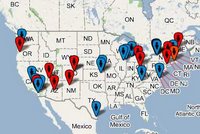For five years before opening her innovative solo practice in Woodland Park, CO, FP Michelle Eads worked in a very traditional, very busy primary care group. Located in Colorado Springs, it employed lots of doctors, operated with an enormous overhead, and processed scores of patients each day.
"I was forced to crank them through as fast as I could," says Eads, whose panel numbered more than 2,000 patients, most of whom she never got to know very well. "After five years of that, I knew I wanted to do something different."
Then she read an eye-opening article by FP Gordon Moore, who practiced in Rochester, NY, and had had his own disillusioning experience with a traditional high-volume, crank-them-through group practice. Moore's article described his odyssey from that frustrating situation to something that both he—and the patients who followed him—found a welcome change. It's a low-volume, highly efficient solo practice that uses cutting-edge technology to keep overhead low and free up time for more doctor-patient interaction.
Eads liked what she read. And—after hearing Moore speak to other FPs about his experience—decided to emulate his model. Today, she practices out of two rooms, totaling 500 square feet. The only other person in the practice is her medical assistant, who quit the group when Eads did. When not taking vital signs and administering simple labs, the MA serves as receptionist, phone operator, and checkout clerk.
At the heart of Eads' practice is her electronic health record, which has built-in practice management software that, as she says, "makes billing quite painless." With a panel of only 400 patients who have access to her 24/7, she's able to give many of her patients one-hour appointments.
"The amount of time I spend at work each week is similar to the time I spent in my previous job," she says, "but my satisfaction is so much higher. I'm happy to be a doctor again."
This was how I got started in my solo practice, too. And like the other doctors mentioned in this article, I am happy to be a doctor again.







